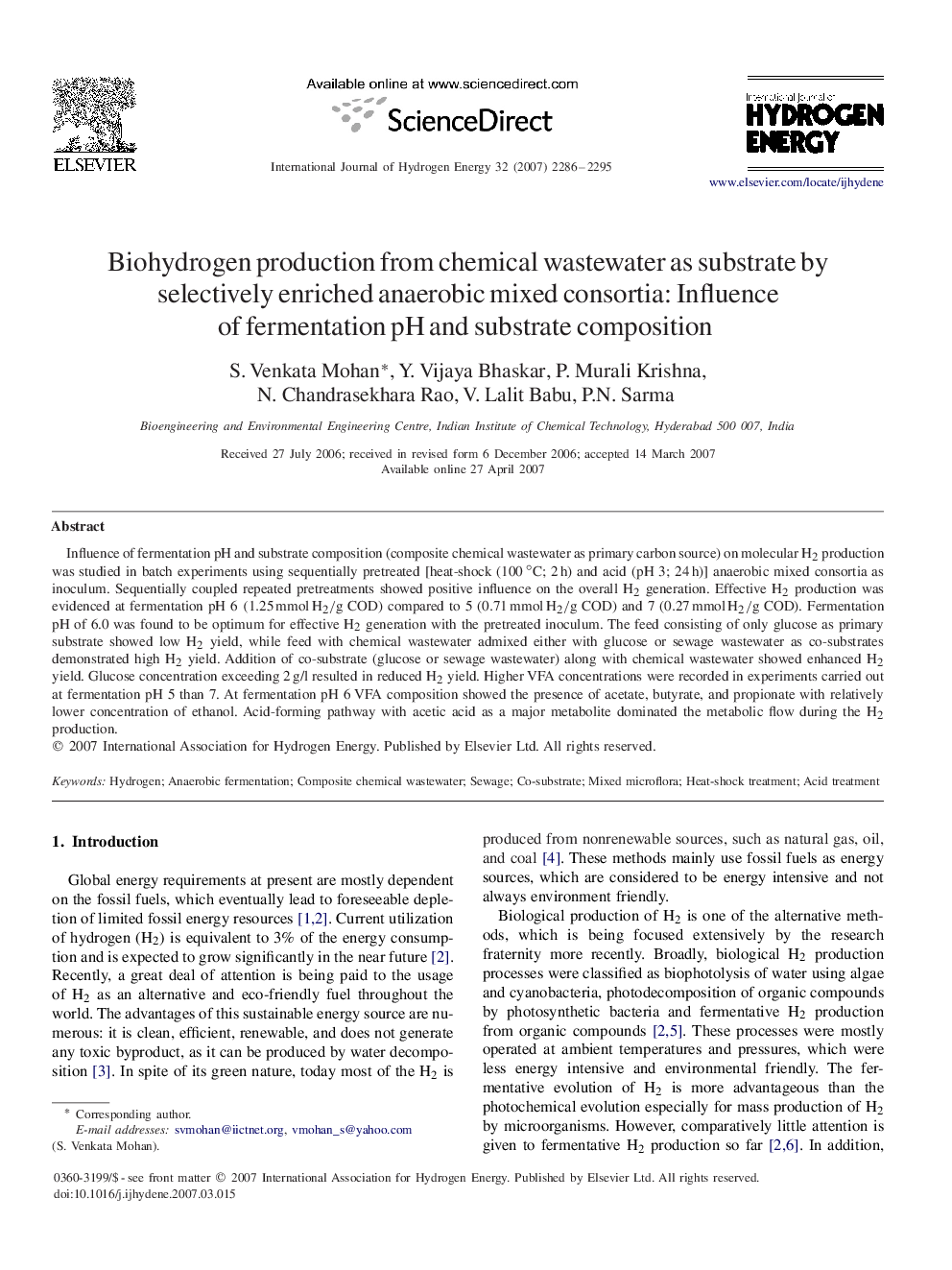| Article ID | Journal | Published Year | Pages | File Type |
|---|---|---|---|---|
| 1280330 | International Journal of Hydrogen Energy | 2007 | 10 Pages |
Influence of fermentation pH and substrate composition (composite chemical wastewater as primary carbon source) on molecular H2H2 production was studied in batch experiments using sequentially pretreated [heat-shock (100∘C; 2 h) and acid (pH 3; 24 h)] anaerobic mixed consortia as inoculum. Sequentially coupled repeated pretreatments showed positive influence on the overall H2H2 generation. Effective H2H2 production was evidenced at fermentation pH 6 (1.25mmolH2/gCOD) compared to 5 (0.71mmolH2/gCOD) and 7 (0.27mmolH2/gCOD). Fermentation pH of 6.0 was found to be optimum for effective H2H2 generation with the pretreated inoculum. The feed consisting of only glucose as primary substrate showed low H2H2 yield, while feed with chemical wastewater admixed either with glucose or sewage wastewater as co-substrates demonstrated high H2H2 yield. Addition of co-substrate (glucose or sewage wastewater) along with chemical wastewater showed enhanced H2H2 yield. Glucose concentration exceeding 2 g/l resulted in reduced H2H2 yield. Higher VFA concentrations were recorded in experiments carried out at fermentation pH 5 than 7. At fermentation pH 6 VFA composition showed the presence of acetate, butyrate, and propionate with relatively lower concentration of ethanol. Acid-forming pathway with acetic acid as a major metabolite dominated the metabolic flow during the H2H2 production.
